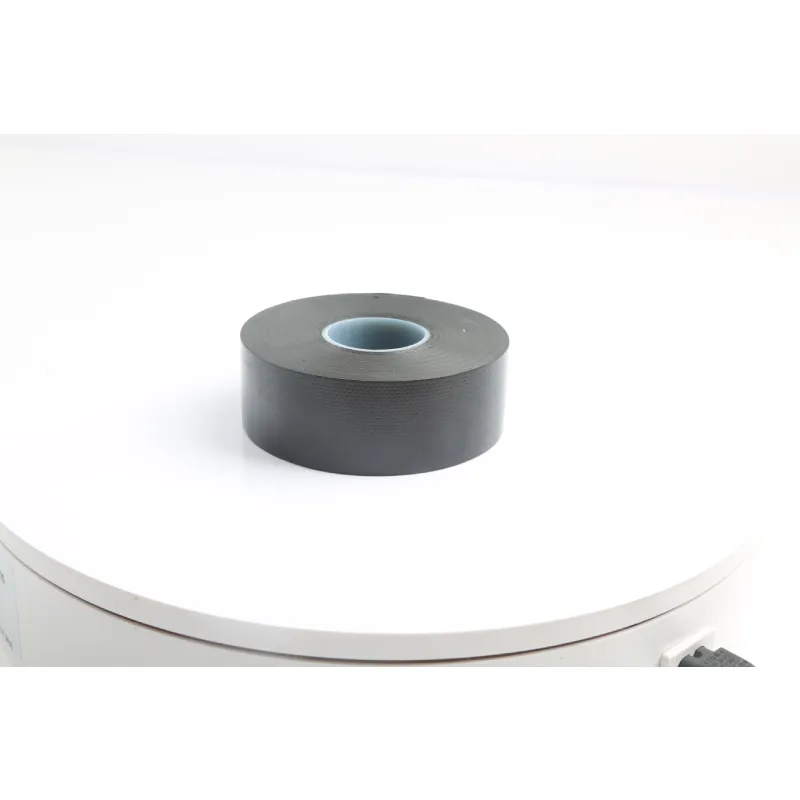The Versatility and Importance of Electrical Rubber Splicing Tape
Electrical rubber splicing tape is an essential tool used in various electrical applications, ranging from home repairs to industrial projects. Its unique properties make it a favored choice among electricians and DIY enthusiasts alike. This article will delve into the features, applications, and benefits of electrical rubber splicing tape, as well as some best practices for its use.
What is Electrical Rubber Splicing Tape?
Electrical rubber splicing tape is a type of self-fusing, insulated tape designed specifically for splicing and insulating electrical wires. Made from rubber, this tape is highly flexible, allowing it to conform well to different shapes and sizes of wires and cables. It is typically coated with a pressure-sensitive adhesive that provides strong adhesion and excellent electrical insulation properties.
One of the defining characteristics of electrical rubber splicing tape is its ability to stretch. This feature enables the tape to conform to irregular surfaces seamlessly, creating a snug fit that is crucial for preventing moisture and debris entry, which can lead to short circuits and other electrical failures. The tape is also resistant to UV light, abrasion, and various chemicals, making it suitable for both indoor and outdoor uses.
Applications of Electrical Rubber Splicing Tape
The applications of electrical rubber splicing tape are vast. Primarily, it is used for
1. Insulating Electrical Connections It provides a protective layer over spliced wires to prevent electrical shocks and short circuits. Proper insulation is vital for ensuring the safety and longevity of electrical installations.
2. Splicing Wires When joining two electrical wires together, the tape can be wrapped around the spliced area to provide a secure and insulated connection. This is essential in both residential and commercial wiring projects.
3. Repairing Damaged Insulation If the outer insulation of a wire becomes damaged, electrical rubber splicing tape can be used to wrap around the exposed area, restoring its protective barrier.
4. Bundling Wires The flexibility and stretchability of the tape allow it to be used for bundling multiple wires together, helping to organize wiring systems and reduce clutter.
electrical rubber splicing tape

Benefits of Using Electrical Rubber Splicing Tape
One of the primary benefits of electrical rubber splicing tape is its durability. Unlike traditional tapes, rubber splicing tape is designed to withstand harsh conditions, making it ideal for both indoor and outdoor applications. Additionally, its self-fusing property means that once applied, it creates a permanent bond that does not degrade over time, reducing the need for frequent replacements.
Safety is another crucial factor. The high dielectric strength of electrical rubber splicing tape ensures that it can handle significant voltage levels without breaking down, preventing electrical failures and accidents.
Furthermore, using electrical rubber splicing tape can save time and money. Its ease of use allows for quick repairs and installations, minimizing downtime in both residential and commercial environments. The tape can be quickly applied without the need for expensive tools or specialized skills, making it accessible for almost anyone.
Best Practices for Usage
To achieve the best results with electrical rubber splicing tape, certain best practices should be followed
1. Clean the Surface Before applying the tape, ensure that the surface is clean and free of dirt and oil to enhance adhesion. 2. Stretch and Wrap When applying the tape, stretch it slightly and wrap it tightly around the area, overlapping each layer by about half to ensure full coverage.
3. Avoid Overexposure While electrical rubber splicing tape is resistant to UV rays, prolonged exposure can degrade its adhesive properties. Use it in shaded areas when possible.
4. Test the Connection After wrapping, always test the electrical connection to ensure that it is secure and functioning correctly.
In conclusion, electrical rubber splicing tape is a versatile and essential product in the electrical industry. Its unique properties, ease of use, and safety features make it an invaluable resource for anyone dealing with electrical installations or repairs. By understanding its applications and following best practices, users can ensure reliable and secure electrical connections.
-
XIANGFAN Rubber Tape-Ultimate Solutions for All Your Insulation NeedsNewsJun.24,2025
-
XIANGFAN Rubber Tape-Protection for Industrial and Residential ApplicationsNewsJun.24,2025
-
XIANGFAN Rubber Tape: Superior Safety and Sealing for Demanding EnvironmentsNewsJun.24,2025
-
XIANGFAN Rubber Tape: Reliable Solutions for Every Electrical ChallengeNewsJun.24,2025
-
XIANGFAN Electrical & Industrial Tape: Powering Reliability Across IndustriesNewsJun.24,2025
-
XIANGFAN Electrical & Industrial Tape: Excellence in Every ApplicationNewsJun.24,2025
